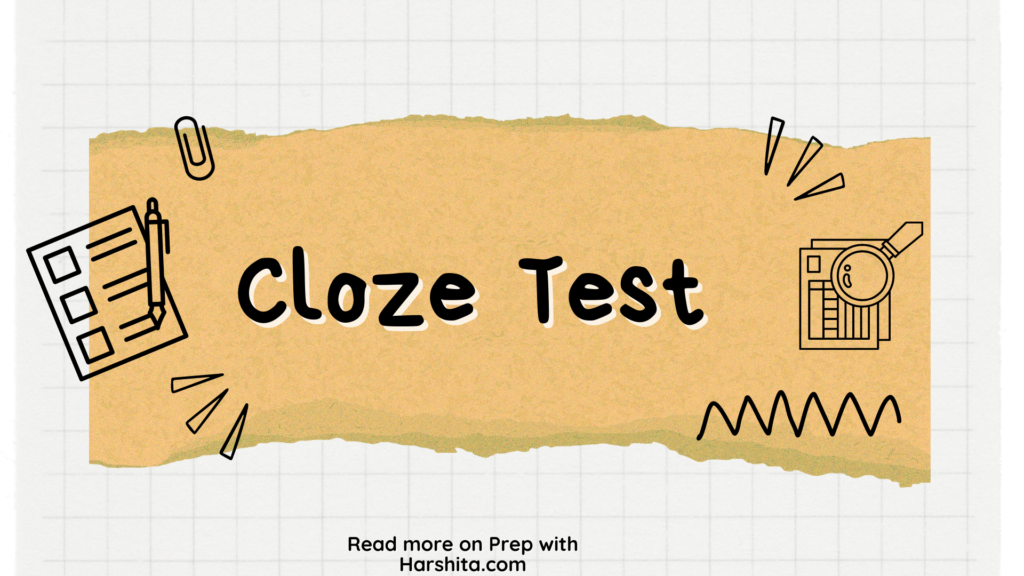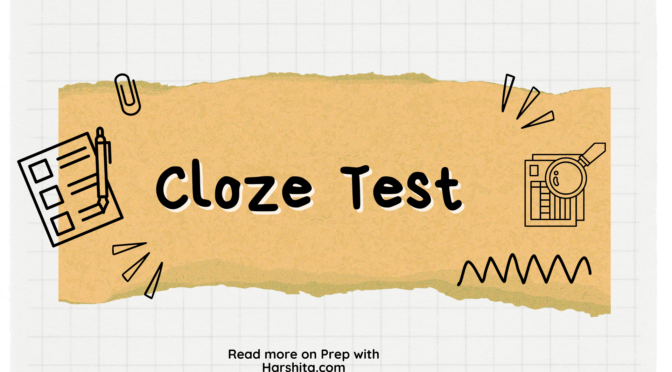A cloze test is an assessment tool used in education to evaluate students’ understanding and comprehension of a text. It involves removing specific words from a passage and requiring students to fill in the missing words or phrases based on their understanding of the context.
Here is a detailed explanation of the cloze test in education:
- Purpose of Cloze Test: The main purpose of a cloze test is to assess students’ language proficiency, reading comprehension, and their ability to use contextual clues to fill in the missing words accurately. It helps educators evaluate students’ vocabulary, grammar, and overall understanding of the text.
- Test Design: A cloze test typically consists of a passage or a paragraph with gaps at regular intervals. The gaps are strategically placed, removing words that are essential to the overall meaning and coherence of the passage. The number of gaps and their locations can vary based on the complexity of the text and the learning objectives.
- Text Selection: The text used in a cloze test should be appropriate for the students’ age, grade level, and language proficiency. It can be selected from a variety of sources, including textbooks, literary works, informational articles, or authentic materials. The text should be meaningful and engaging to ensure students’ interest and comprehension.
- Word Removal: In a cloze test, words are selectively removed from the passage. The gaps can target different linguistic elements such as nouns, verbs, adjectives, adverbs, prepositions, or conjunctions. The removed words should be significant enough to test students’ understanding but not so challenging that they impede comprehension of the passage.
- Test Administration: The cloze test is typically administered under controlled conditions, either as a timed assessment or as an untimed activity, depending on the purpose and context. Students are given the passage with gaps and are instructed to fill in the missing words using their knowledge, context clues, and understanding of the text.
- Assessment and Scoring: Scoring a cloze test can be done using various methods. One common approach is to award one point for each correct answer. The total score is then converted into a percentage or a scaled score to determine the level of student performance. Additionally, educators may analyze the types of errors made by students to gain insights into their specific language weaknesses or areas for improvement.
- Benefits of Cloze Test: Cloze tests offer several benefits in educational settings, including:
a) Assessing Reading Comprehension: Cloze tests provide insight into students’ ability to understand and interpret written texts.
b) Evaluating Vocabulary and Grammar: By filling in the missing words, students’ vocabulary knowledge and grammatical accuracy can be assessed.
c) Encouraging Contextual Understanding: Students are encouraged to use contextual clues to deduce the missing words, promoting deeper comprehension of the text.
d) Enhancing Critical Thinking Skills: Cloze tests require students to analyze the text, make inferences, and select appropriate words, thereby fostering critical thinking abilities.
e) Monitoring Progress: Cloze tests can be administered periodically to track students’ progress and identify areas that need further attention or instruction.
In conclusion, the Cloze test is a valuable assessment tool in education that evaluates students’ language proficiency, reading comprehension, and ability to use context to fill in missing words. By assessing vocabulary, grammar, and contextual understanding, it provides educators with valuable insights into students’ language skills and helps inform instructional practices.
Also Visit: Prep with Harshita

Also Read: Teaching Mechanism of Reading


Your article helped me a lot, is there any more related content? Thanks!
I don’t think the title of your article matches the content lol. Just kidding, mainly because I had some doubts after reading the article.